Though acceptable, dry toilet paper isn’t the right way to clean nether regions after defecation.
That’s where bidets enter the picture. Except for America, bidets are popular all over the world but recently, the shortage of toilet paper has contributed to the popularity of bidets.
With people having little to no knowledge about bidets, we curated this guide to discuss the correct way of using them.
Types Of Bidet
The 4 different types of bidets are as follows:
1. Free-Standing Or Standalone Bidets
Free-standing or standalone bidets are the traditional type that originated in 18th Century Europe. A standalone bidet is usually placed adjacent to the regular toilet and are low-sink and large. Most standalone bidets are equipped with jets and may also be filled with water that rises to the surface of the bowl.
2. Built-In Bidets
Toilets with a bidet feature are known as built-in bidets. When a toilet with a built-in bidet is flushed, it is likely to clean the user by dispensing a vertical stream of water automatically. You’re likely to come across such types of bidets in compact spaces in America and Asia.
3. Handheld Bidets
Also known as a bidet sprayer or bidet shower, a handheld bidet is a toilet-attached nozzle. Such a bidet is manually positioned near the user’s private parts to clean them after using the toilet. Handheld bidets allow users to control the stream of the water position.
4. Warm Water Bidets
A warm water bidet can be in any form-sprayer attachment – free-standing or built-in. As the name suggests, warm water bidets either feature built-in water warmers or are connected to a hot water pipe system, offering a warm spritz to users.
Know The Bidet
Accustoming yourself to the controls of a bidet is important; otherwise, using the bidet would be challenging.
Starting with the basics, the central feature of any bidet basin is the spray nozzle. This component basically cleans your posterior by sending water upwards.
Most bidets come equipped with a lever using which you can control the jet. You wouldn’t know how high it goes or learn its location unless you use it.
Bear in mind that some bidet models spray water on the target area only when a certain pressure level is maintained on the button or lever.
The next thing that you should know is that many bidets have both hot water and cold water controls, but others don’t, and usually have either hot or cold water controls. You’ll have to test the bidet to understand how to set your preferred temperature. If you don’t set it prior to using the bidet, it will release uncomfortably cold or hot water.
Lastly, the nozzle position on some bidets can be adjusted for feminine or posterior angles.
How To Use A Bidet: A Step-By-Step Tutorial
In American homes, the most common bidets you’ll encounter are bidet attachments and bidet toilet seats, and both function in a similar manner. Also, we liked that both the bidets come with clearly labeled controls and you won’t face difficulties while using them.
Here we’ve discussed how to use each type of bidet in detail.
I. Standalone Bidet
Step 1 – Straddle The Bidet
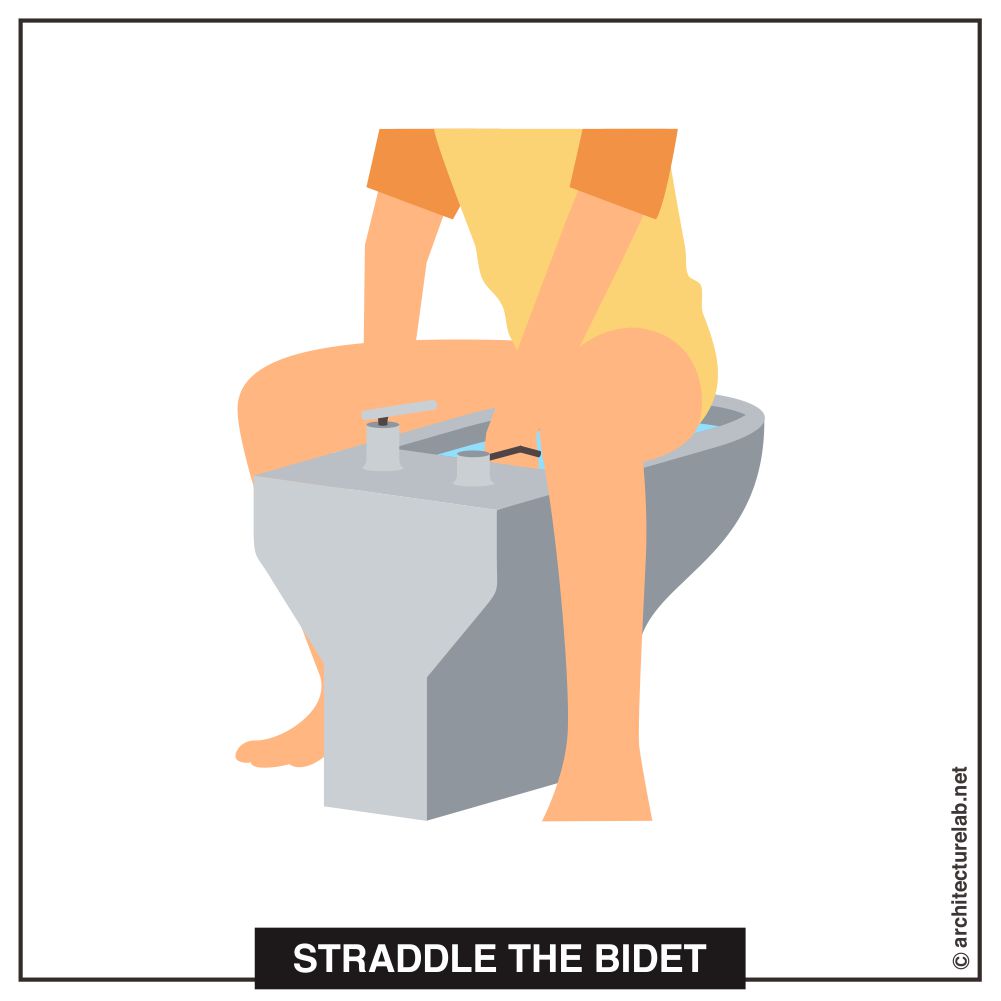
On a standalone bidet, you can sit in 2 ways- facing towards the water controls of the bidet or away from it as you’d do on a toilet seat. One benefit of sitting facing the controls is that controlling the flow and the temperature of the water is easy. This is particularly beneficial in bidets, which produce a very high jet of water.
Step 2 – Position Yourself
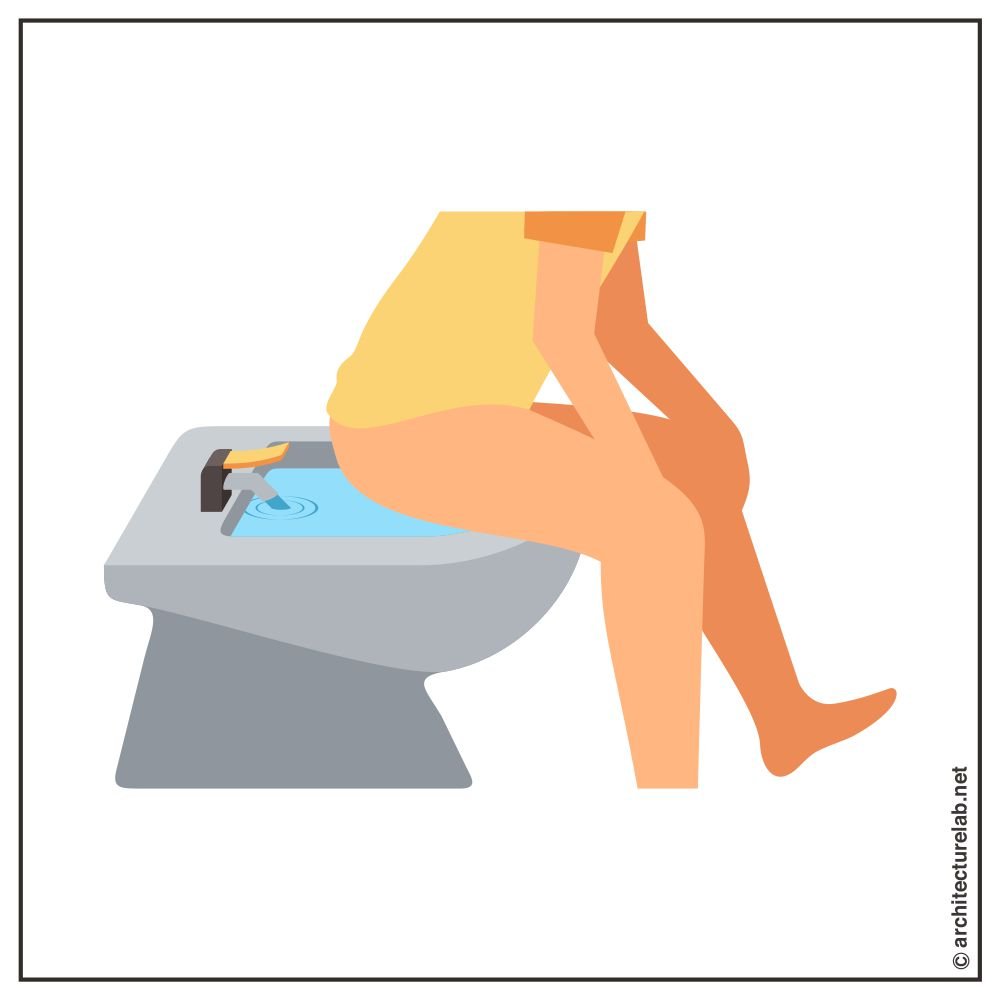
In order to clean yourself, squat or sit over the bidet, as you’d do in toilet seat bidets, except that you’ll have to face the rear side more than the front.
Bear in mind that some standalone bidets do not come equipped with jets. Instead, they are meant to be used like a basin: fill the basin with water, and you’ll have to lap the water using your hands as you’d do in the shower or bath.
Step 3 – Turn The Knobs On
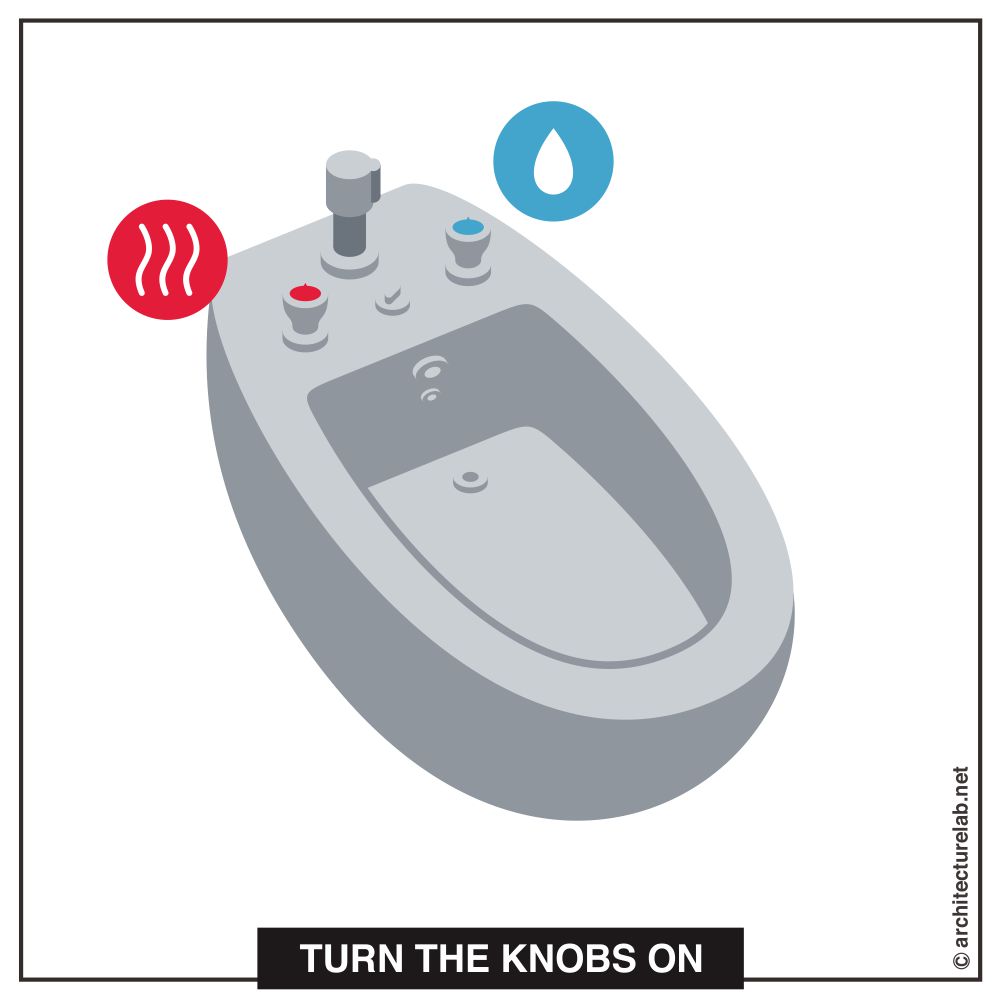
Before turning on the knobs, place yourself such that your posterior is over the jet. After that, turn either the hot or the cold tap to release water.
Although the knob you turn on depends on your comfort, we suggest turning on the cold water first. Gradually, you can turn on the hot water.
Be careful of turning on the hot water first because many bidets, with only a slight turn of the knob, release a very high jet of water.
Tip
In countries with normally hot climates like the Middle East, you should always run the cold water first. That’s because the water in such countries is automatically hot, so it won’t require any time to heat up. In case you turn on the hot water first, there’s a high possibility that you may end up burning your sensitive areas.
II. Electric Bidet Seat
Electronically-controlled bidets come with buttons on the remote or side control panel. If you’ve never used an electric bidet, the number of controls on the remote may seem overwhelming.
Like traditional toilets, you do not need to move to use bidet seats as you’re already on that. All you need to do is get comfortable on that seat.
Unless the wash button is pressed, the nozzle remains retracted. As soon as you start washing, the spray and the position of the nozzle are calibrated to be out of the way of unclean water. The nozzle also self-cleans itself after every toilet use.
Step 1 – Start Your Bidet Wash
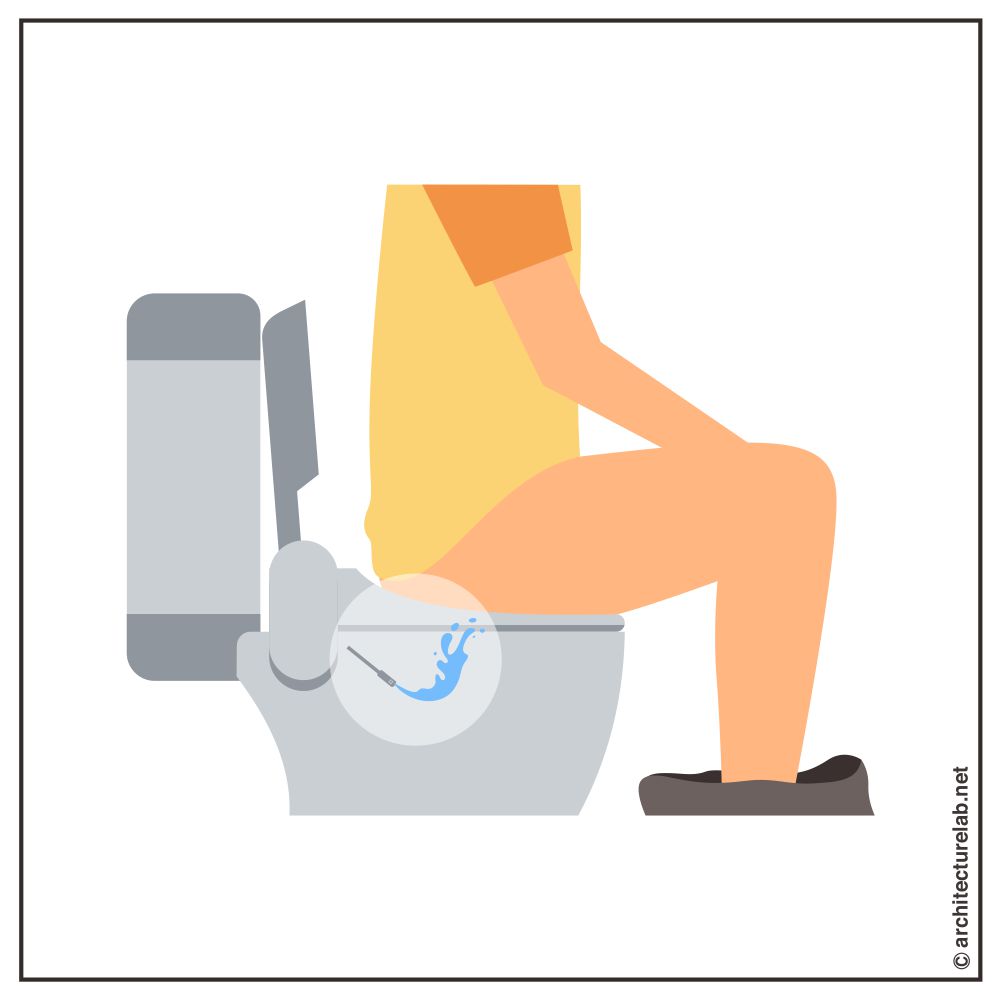
After taking care of your business, click the wash button on the panel or the remote control, and one spray nozzle will extend underneath you. Either the button will be attached to the seat or mounted on the wall.
Step 2 – Make Adjustments
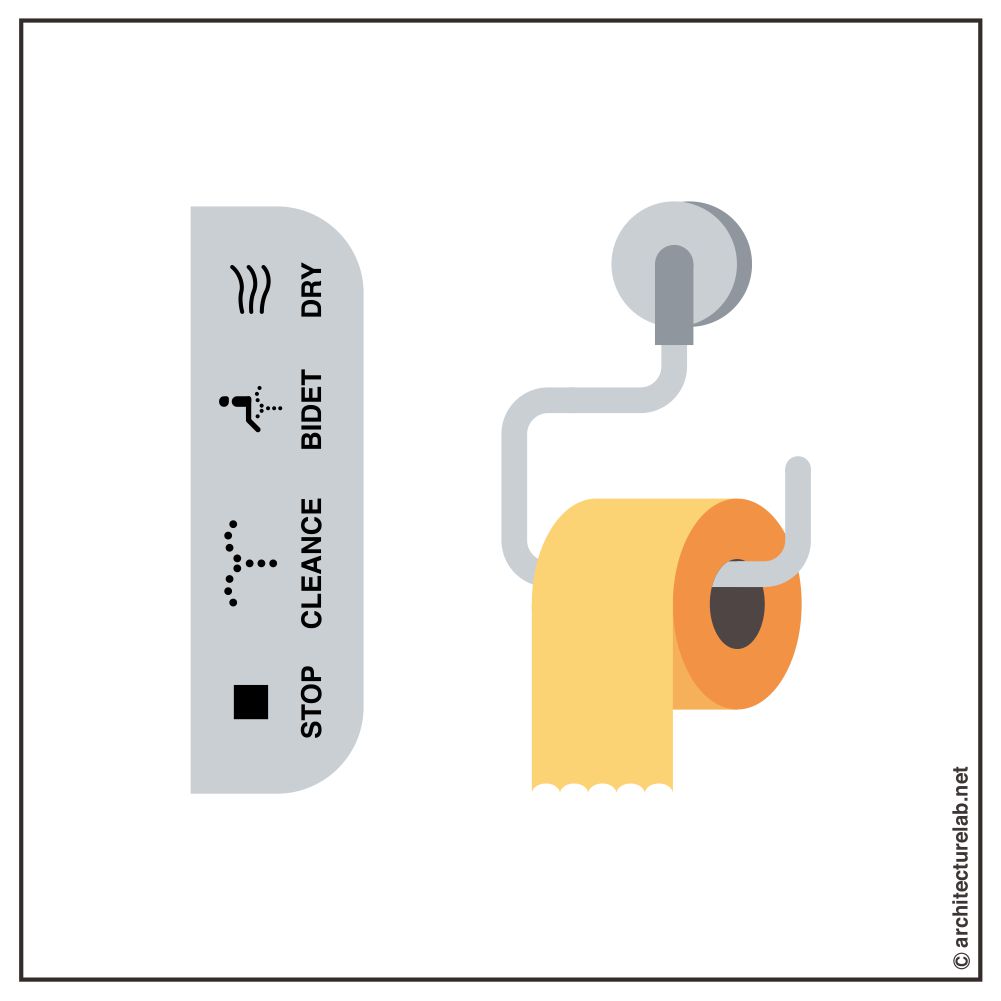
As the nozzle sprayer starts spraying, use the panel or electric control so that the water hits the right spot. Settings are easy to customize on an electric bidet attachment, as you can adjust everything from the water pressure to the water temperature with a click.
After you’re done, click stop on the remote control or the panel. The nozzle sprayer will then clean itself and slide back into its position.
Step 3 – Dry Yourself
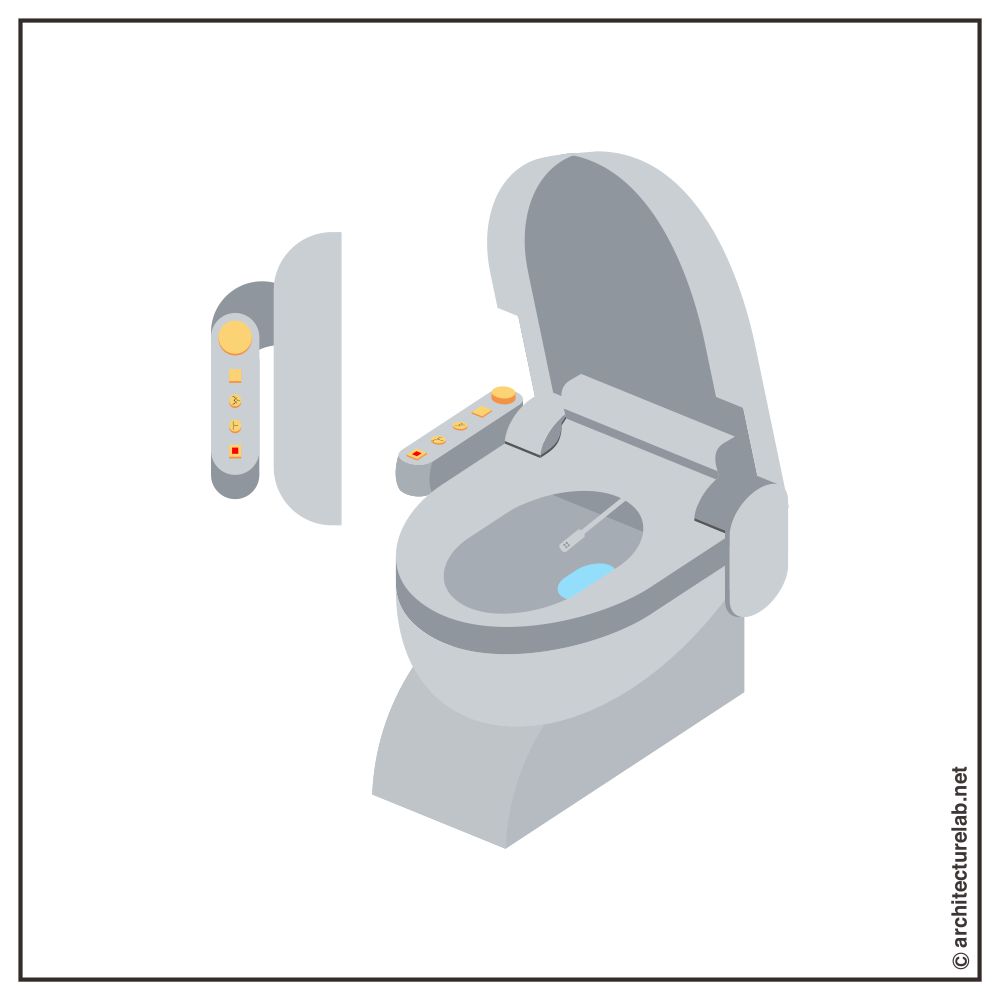
While some bidets feature a warm-air dryer, others have toilet paper. You will have to dry yourself depending on what’s available. If there is toilet paper, gently pat it on the posterior to dry. In the case of an air dryer, click the “dry” button on the control panel to start drying.
III. Handheld Bidet
Bidet sprayers are usually connected to the water source of the toilet. And as far as the functionality is concerned, they work similarly to the garden or the kitchen sprayer.
The moment you’re done with your business, grab the handheld bidet while sitting on the toilet and point it towards the area you have to clean. To spray water or adjust the pressure, squeeze the handle.
Of course, we recommend starting with low pressure to avoid making a mess.
IV. Non-Electric Bidet Seat
Non-electric bidet seats, unlike electric ones, come with a knob that dispenses water upon turning it on. The more you turn the knob, the higher will be the water pressure.
That’s why turning the knob on slowly and steadily is the key to getting started.
No doubt, high water pressure does a great job of cleaning fecal matter. But the chances of hurting yourself are high if you turn on the knob too much.
Non-electric bidets also have knobs for adjusting the nozzle position and the water temperature (hot or cold). Before you start your business, experimenting with the knobs will be the best bet so that you can achieve your optimal comfort level.
Refrain from using too hot water, as it may clean your posterior better but at the cost of scalding your skin.
V. Travel Or Portable Bidet
Portable bidets, also known as travel or backpacking bidets come with a nozzle attached to a can or a bottle. The bottle can hold around 13 ounces of water, which is ideal for use on the go.
First off, you’ll have to fill the bottle or can with water. Remember, neither too hot nor too cold water, as either of them will lead to discomfort. Once you fill the bottle with water, screw on the nozzle.
When you’re done using the bathroom, point the nozzle sprayer toward your posterior or the area you have to clean. While sitting on the toilet, keep squeezing the bottle, as this will send a stream of water to the nozzle sprayer with which you can clean your private parts.
After you’re done, clean the bidet by rinsing it in the sink thoroughly and washing your hands to remove impurities.
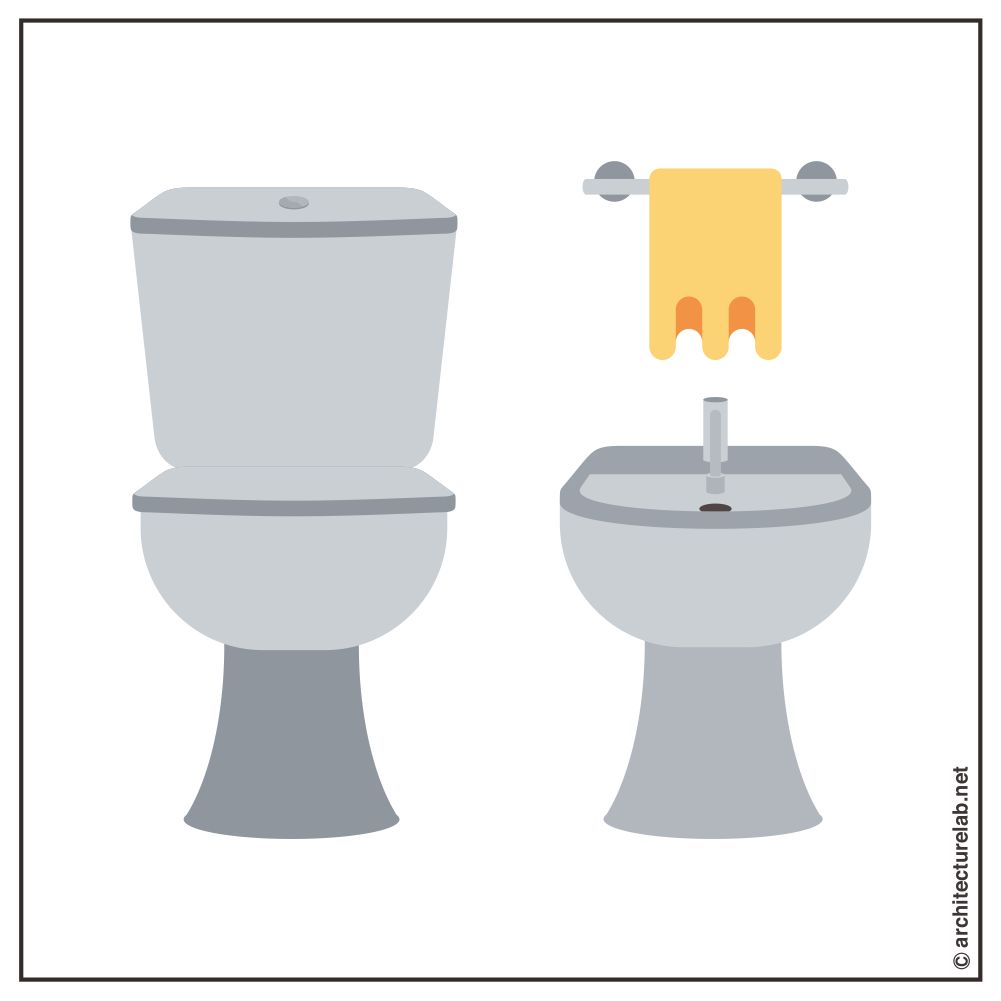
Cautions
Bidets are great for cleaning your private parts after using the restroom, but there are risks associated with using them. Remember that bidets aren’t for everyone, especially those with a weak immune system.
Bidets can result in an itchy feeling in the anus if males use them before having any bowel movement.
Conversely, those with female genitalia may expose themselves to the risk of developing bacterial vaginosis. One study has revealed that using warm water bidets can aggravate the vagina’s natural flora balance. Electric warm water bidets are also associated with bacterial contamination.
How to use a bidet in a public setting safely?
Speaking of public bidets, they aren’t hygienic at all, so you’ll have to take some precautions to use them.
When you use a bidet in a public setting, check the water temperature and pressure by turning it on before it’s time to use it. And always clean the nozzle sprayer using a tissue or toilet paper before using it.
Never should you use the towel that hangs by the bidet to wipe your private areas. Remember that towel is meant for wiping hands and could be full of bacteria that may lead to health issues.
Do residential bidets need cleaning?
Yes, residential bidets need to be cleaned regularly, just like a traditional toilet. However, the only thing is that you’ll have to clean your bidet as per the guidelines laid down by the manufacturer. Quite a few nozzles come with a cleaning setting, which can be used to run clean water over the head of the nozzle.
Also, wiping the interior of the nozzle is recommended twice a week or once a month.
Which countries have bidets?
Other than the United States and the Middle East, South Korea, Greece, France, Uruguay, Turkey, Portugal, India, Lebanon, Brazil, Egypt, Japan, and Italy are known for having bidets.
The Bottom Line
Arguably, bidets are considered more sanitary than cleaning your posterior solely with toilet paper. That’s because they combine cleaning sensitive areas with water and toilet paper.
It’s a no-brainer that water cleans trace amounts of feces after defecation better than a few squares of dry toilet paper.
As someone who has always used the traditional toilet, it may take some time for you to get habituated to using a bidet. Initially, it may seem confusing, but rest assured, you’ll find it more convenient than toilet paper.
If you’ve been thinking of installing a bidet for a long time, now is the time to upgrade to it. Also, keep up with the required cleaning and maintenance to make it safe and sanitary.


